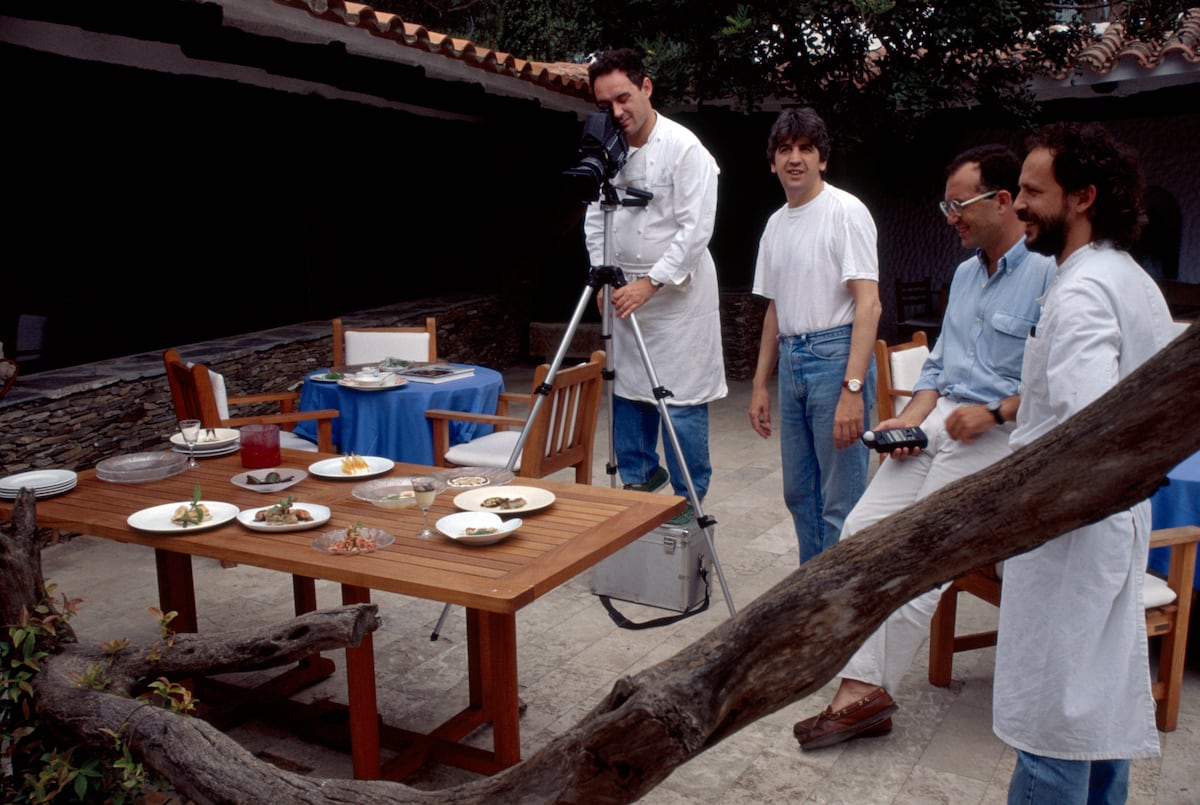A scuba diver on a shell collector.Submon
Submon, an association dedicated to the conservation, study and dissemination of aquatic species, has set up some 48,000 square meters of underwater laboratory in Llançà, north of Cap de Creus (Girona).
In this
Space for Marine Custody
agreed with the Generalitat and the City Council, in a pioneering way attempts will be made to replant bunches of Posidonia
(Posidonia oceanica)
uprooted by storms and washed up on the beach, to capture larvae of shellfish
(Pinna nobilis)
through collectors and to install a structure as a refuge for seahorses (
Hippocampus guttulatus
).
The laboratory is located in the marine part of the Serra de la Albera, specifically on the beaches of Canyelles and El Rastell and is part of the Natura 2000 Network.
Before setting up this underwater laboratory where actions dedicated to the preservation of species in regression will be carried out, Submon cleaned the area of abandoned concrete blocks that affected the Posidonia.
"The dead plant area is the ideal place to try to replant the stems," explains one of the project's biologists, Jordi Sánchez.
The custody space is within the Natura 2000 Network, a network of biodiversity conservation areas to promote the good state of conservation of habitats and species of community interest.
It is the largest network of protected areas and a basic instrument for the conservation of nature in the EU.
Marine spaces are 38% of the total.
Sánchez explains that in an area of 300 by 160 meters they have already marked several underwater plots of 2 square meters.
Now all that is missing is a storm that, as so often, leaves the sand on the beach covered in posidonia uprooted from the seabed and there are viable bunches to be replanted.
Then the gear will start up and residents of the town, who have already received training, will take the bushes and take them to the brotherhood where they will have already prepared some drums of salt water so that they can be kept inside.
Later, the experts will go to do the replanting.
This initiative has the support of Coca-Cola through the
Circular Seas
project .
Posidonia is an endemic and essential marine plant for the Mediterranean that is not found in any other sea.
It is found on sandy bottoms up to 40 meters deep and has roots, a stem, leaves and sometimes flowers and fruits.
It is vital for the ecosystem, since it keeps the sediment immobile with its roots and its meadows provide habitat, food and shelter for a multitude of species (such as seahorses and shellfish), it acts as a carbon sink (blue carbon), oxygen water and filters suspended particles, which is why it is associated with crystal clear waters and protects the coast from storms and waves.
Likewise, it is sensitive to contamination, which is why it is a bioindicator of water quality.
It is on the list of Wild Species under Special Protection Regime, and is threatened by the anchoring of boats, constructions and above all climate change.
Another of the projects is the installation of collectors to try to capture shellfish larvae.
“We believe in conserving shellfish if we manage to capture larvae, although so far we have not been successful in this area.
In the spring we will try again”, says Sánchez.
The fact that it is a hermaphrodite (changes sex several times) together with low recruitment, causes serious difficulties for its recovery.
The nacra is the largest mollusk in the Mediterranean and the second largest on the planet - it can reach a meter - and it is also emblematic for not living in any other sea.
In 2016 the parasite (
Haplosporidium pinnae
) caused massive mortalities and led to its drastic disappearance.
It was declared endangered.
It lives in Posidonia and
Cymodocea nodosa meadows.
and it facilitates new habitats for benthic species and by feeding by water filtration it retains large amounts of organic matter in suspension and favors transparent waters.
Finally, Submon biologists have a project for the conservation of seahorses ready, although funding is lacking.
"If we do not get it, we do not rule out financing it ourselves," they maintain from the entity.
"They are difficult to see, but there are," says Sánchez.
Where there is no posidonia, they will install some structures to create three-dimensionality.
The idea is that they use them as a refuge.
Seahorses are a group of fish -there are 50 types- of the genus
Hippocampus
.
They are covered in bony rings and their way of swimming is unique, upright, thanks to their dorsal fin.
They are carnivorous and have no teeth, through their long snout they swallow food.
They measure between 15 millimeters and 30 centimeters and live all over the world at shallow depths in temperate waters with lots of algae.
It is monogamous and the only animal species that gives birth to the male after the female inserts between 100 and 1,500 eggs into the incubator bag.
The experts are waiting.
They trust that in summer some bunch of Posidonia will have taken root and at the end of the season they will dismantle the shell collectors to evaluate their results.
You can follow EL PAÍS Catalunya on
and
, or sign up here to receive
our weekly newsletter
Subscribe to continue reading
Read without limits
Keep reading
I'm already a subscriber



/cloudfront-eu-central-1.images.arcpublishing.com/prisa/HLK7GOESWRBMZA2KE2VATJISN4.jpg)


